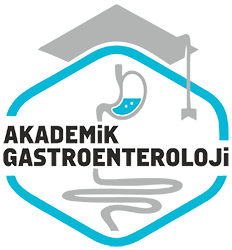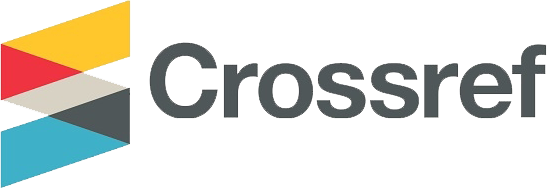Agustos 2022
Elastografik fibroz ve steatozun klinik, demografik ve laboratuvar belirleyicileri
Demographic, clinical and laboratory predictors of hepatic steatosis and fibrosis by elastography
- Ana Sayfa
- Sayılar
- Agustos 2022
- Elastografik fibroz ve steatozun klinik, demografik ve laboratuvar belirleyicileri...
Özet
Giriş ve Amaç: Viral hepatitler tüm dünyada en önemli karaciger hastalığı nedeni olma özelligini sürdürmektedir. Bunun yaninda alkolik ve nonalkolikkaraciger hastalıklarına da artan sıklıkta rastlanmaktadır. Obezite ve diyabet sikligi ile alkol tüketimindeki artislar, bu faktörlerin önümüzdeki yıllarda kronikkaraciger hastalıklari etiyolojisinde daha önemli olacagini düsündürmektedir. Karaciger fibrozisi ve sonucunda gelişen siroz, kronik karaciger hastalığıninbaslica morbidite ve mortalite sebebidir. çalışmada elastografi ile elde edilen fibrozis ve steatozis sonuçlarının biyokimyasal ve antropometrik parametrelerleolan ilişkisinin incelenmesi amaçlandi. Gereç ve Yöntem: Karadeniz Teknik Üniversitesi Tıp Fakültesi Hastanesi Gastroenteroloji Klinigi’ne basvuran veelastografi yapılan 50 hasta çalışmaya dâhil edildi. Hastaların biyokimyasal parametreleri ve beden kitle indeksi ile elastografik steatoz ve fibrozis skorlariarasındaki ilişki değerlendirildi. Elastografi kontrollü atenüasyon parametresi değerleri Li’nin skalasi baz alinarak S0-S3 arasında; fibrozis/elastisite değerleriise Petroff’un skalasi baz alinarak F0-F4 arasında siniflandirildi. Bulgular: çalışmaya dâhil edilen 50 hastanın 26’sı erkek, 24’ü kadındi. Ortalama yaş 49.9± 13.4 yıldi. Vücut kitle indeksi için ortanca değer 29.4 kg/m2 olarak saptandi. En sık eslik eden hastalıklar hipertansiyon (n = 19, %38), diyabetes mellitus (n= 19, %38), hiperlipidemi (n = 11, %22) ve hipotiroidi (n = 7, %14) idi. Hastaların transient elastografi ile ölçülen fibrozis skorlari; F0-1 %84 (n = 42), F2 %4 (n= 2), F3 %4 (n = 2 ve F4 %8 (n = 4); elastografi kontrollü atenüasyon parametresi değerleri ise S0 %61.2 (n = 30), S1 %2 (n = 1), S2 %10.2 (n = 5), S3 %6.1(n = 3), S4 %20.4 (n = 10) seklinde idi. Steatoz derecesi ? S2 olanlarda vücut kitle indeksi ve trigliserit düzeyi anlamli olarak daha yüksekti (p < 0.05). Fibrozisdüzeyi ? F2 olanlarda total kolesterol, yüksek dansiteli lipoprotein, alanin aminotransferaz ve gama glutamil transpeptidaz değerleri anlamli olarak yüksekti(p < 0.05). Alici islem karakteristikleri egrisi kullanilarak yapılan analiz sonucunda steatoz derecesi ? S2 varligini öngördüren vücut kitle indeksi değerinin29.6 kg/m2 olduğu saptanmıştır (%73.7 duyarlilik, %65.5 özgüllük, egrinin altında kalan: 0.808, %95 güven araligi: 0.687-0.028). Sonuç: Elastografik olarakkaraciger steatoz ve fibrozisinin belirlenmesi, Hastaların rutin takiplerinde klinik durumu, prognozu ve tedavi cevabinin değerlendirilmesi açısından faydali veetkin bir yöntemdir. Ekonomik nedenlerle uygulanamadigi durumlarda noninvaziv testlerin kullanımi ihmal edilmemelidir.
Abstract
Background and Aims: Viral hepatitis continues to be the most important cause of liver disease all over the world. In addition, alcoholic and non-alcoholicliver diseases are also encountered with increasing frequency. The prevalence of obesity and diabetes and the increase in alcohol consumption suggestthat these factors will be more important in the etiology of chronic liver diseases in the coming years. Liver fibrosis and associated cirrhosis are the maincauses of morbidity and mortality in chronic liver disease. In our study, we aimed to examine the relationship between fibrosis and steatosis results obtainedby elastography and biochemical and anthropometric parameters. Materials and Method: Fifty patients who applied to Karadeniz Technical UniversityMedical Faculty Hospital Gastroenterology Clinic and underwent elastography were included in the study. The relationship between the patients’ biochemicalparameters and body mass index, and elastographic steatosis and fibrosis scores were evaluated. Elastography controlled attenuation parameter values arebetween S0 and S3 based on the scale of Li; fibrosis/elasticity values were classified between F0-F4 based on Petroff’s scale. Results: Of the 50 patientsincluded in the study, 26 were male and 24 were female. The mean age was 49.9 ± 13.4 years. The median value for body mass index was 29.4 kg/m2.The most common comorbidities were hypertension (n = 19, 38%), diabetes mellitus (n = 19, 38%), hyperlipidemia (n = 11, 22%) and hypothyroidism (n =7, 14%). Fibrosis scores of patients measured by transient elastography; F0-1 was 84% (n = 42), F2 4% (n = 2), F3 4% (n = 2), and F4 8% (n = 4). Elastography controlled attenuation parameter values are S0 61.2% (n = 30), S1 2% (n = 1), S2 10.2% (n = 5), S2-3 6.1% (n = 3), S4 20.4% (n = 10). In those witha degree of steatosis ? S2; body mass index and triglyceride levels were significantly higher (p < 0.05). Total cholesterol, high density lipoprotein, alanineaminotransferase and gamma glutamyl transferase values were significantly higher in patients with fibrosis level ? F2 (p < 0.05). As a result of the analysisusing the receiver operating characteristic curve, the body mass index value predicting the presence of steatosis degree ? S2 was found to be 29.6 kg/m2 (73.7% sensitivity, 65.5% specificity, under the curve: 0.808, 95% confidence interval: 0.687-0.028). Conclusion: Elastographic determination of liversteatosis and fibrosis is a useful and effective method in the routine follow-up of patients, in terms of evaluating the clinical status, prognosis and treatmentresponse. The use of non-invasive tests based on biochemical parameters should not be neglected in cases where device-dependent noninvasive testscannot be applied for economic reasons.



